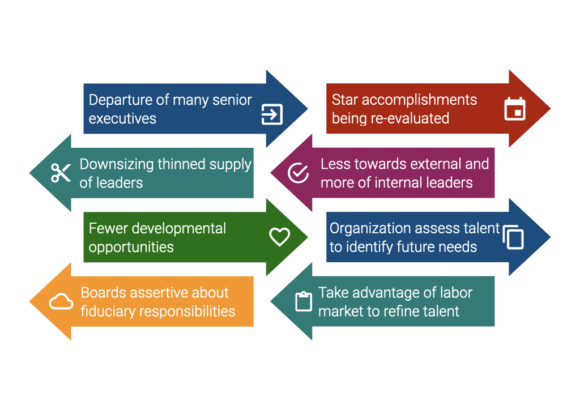Many leadership development executives seek to develop a holistic strategy for their organization. In many cases it has been challenging. High degrees of variation in development efforts result in redundant and inconsistent initiatives.
Our experience of working with clients, has helped us identify what enables effective succession. Keeping a
critical eye on the below factors will help mitigate succession losses.

1. The poor economic performance or ethical missteps are forcing the departure of many senior executives.
2. Downsizing has thinned the supply of leaders at all organizational levels.
3. Slower organizational growth has resulted in fewer developmental opportunities through stretch assignments and job rotations.
4. Cost-cutting has reduced the number of development programs available.
5. Boards are becoming more assertive about their fiduciary responsibilities surrounding long-term talent development.
6. Trumpeted accomplishments of star CEOs are being re-evaluated and in many cases are now seen as exaggerated.
7. Organizations are beginning to look less towards external CEOs and more towards internal leaders.
8. Organizations are assessing their talent weaknesses now to identify needs for future growth.
9. Organizations are taking advantage of the soft labor market to refine their talent management processes in the war for talent.
10. High-potential employees are increasingly demanding a more equitable work-life balance.
11. Many of those capable of leading large organizations are not willing to make personal sacrifices to develop along traditional career paths.

